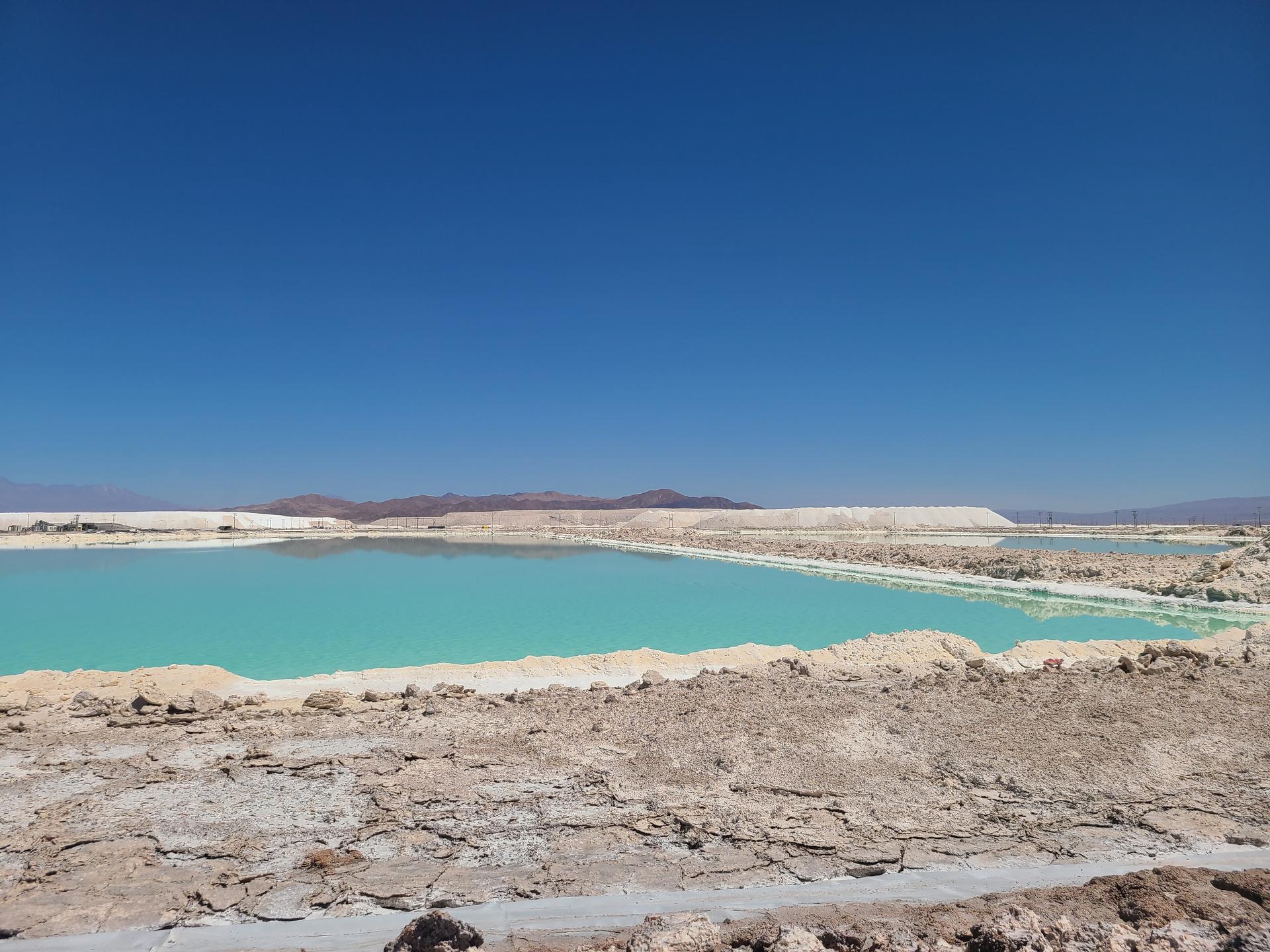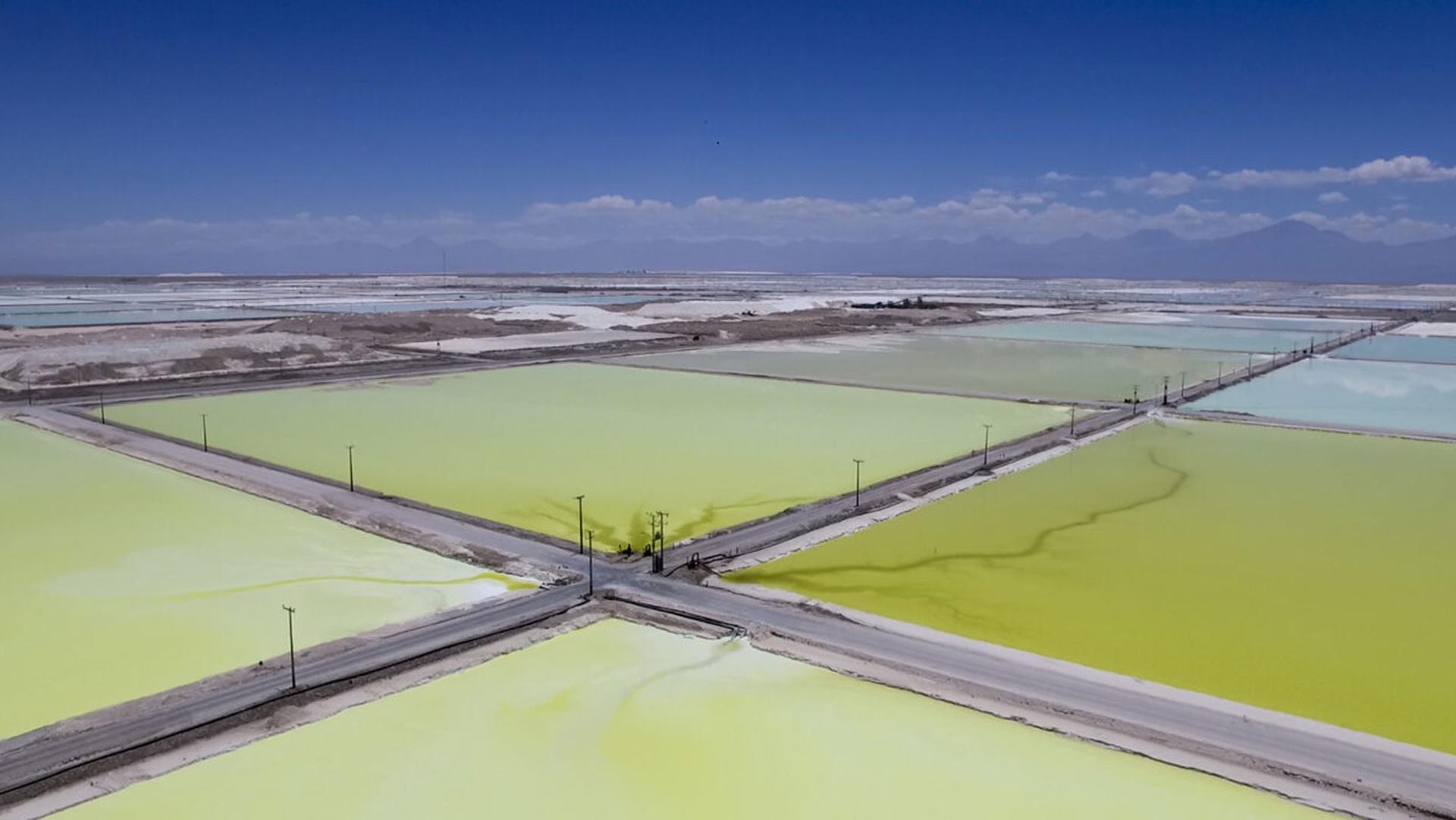In the salty waters beneath the world’s driest desert, lie vast reserves of a valuable mineral: lithium.
This metal is crucial for the planet’s energy transition. It is used to power electric vehicles and store solar and wind energy, which bring some hope to a world faced with a rapidly changing climate.
The lithium mines, which occupy more than 30 square miles of Chile’s Atacama Desert, are operated by two private companies, Sociedad Química y Minera de Chile (SQM) and Albemarle. They both have rental contracts with the Chilean government.
In these facilities, salty ground water rich in minerals gets pumped to the surface. The liquid, called brine, is then stored in huge evaporation ponds that are exposed to the desert heat.
“During [a span of] 18 months, the water in the brine evaporates, and [the] lithium becomes more concentrated,” said Oswaldo Yáñez, SQM’s manager of innovation and development.
This region has some of the highest solar radiation levels on Earth, and it almost never rains. “The water evaporates incredibly fast here,” Yáñez added.
The process ends at a closed plant, where lithium is turned into carbonate and shipped abroad, to places like China or the US.
In the past 10 years, the global demand for lithium has skyrocketed. And the increase in production of electric vehicles is expected to raise this demand by at least 300% in the next 10 years.
This is good news for Chile’s economy. The South American country meets about a third of the globe’s lithium demands, and plans to boost lithium production in the next few years.
Close to 60% of the world’s 86 million tons of identified lithium resources are in Bolivia, Chile and Argentina, according to the US Geological Survey, in an area known as the “Lithium Triangle.”

While Chile has successfully transformed the majority of its available resources into reserves available for commercial production, Argentina and Bolivia have not yet done so. This is largely because of unfavorable investment climates and more challenging geographic conditions, according to Juan Carlos Zuleta, a Bolivian researcher who has been following the lithium business for decades.
“This metal will soon be a game changer for this region’s economy,” Zuleta said.
But for him, the real opportunity is not in extracting and selling lithium. He is researching a possible association between six countries in South America to fabricate and sell lithium batteries and electric vehicles, which the country now imports from abroad.
“My idea is basically to create a hub of electric vehicles in South America for the regional market,” Zuleta said. “If we are able to produce the next generation of EVs [electric vehicles] in South America, then we could become a superpower.”
Lithium will be crucial in the transition to clean energy, but the extraction method used in the Lithium Triangle presents several environmental problems, according to James Blair, an anthropologist at Cal Poly Pomona, who has done research on lithium mining’s impact on Atacama’s Indigenous communities.
“The main concern is its impact on water use and water availability,” Blair said.
“When a large percentage of the water from the brine evaporates, yes, this is exacerbating what is already a major problem of depleted water in one of the driest areas of the world.”
Indigenous peoples also worry that the amount of water used in lithium operations threatens desert irrigation and farming methods they have relied on for centuries.
Rudencindo Espíndola, an Indigenous topographer in this area, and an activist with the National Observatory of Salt Flats in Chile, said there is a conflict over the way that the industry has presented impacts as benign versus what the Indigenous communities experience.
“Brine should be treated as water. … It’s part of our hydrogeological ecosystem and it has a lot of ancestral value for us, so it’s worth preserving.”
“Brine should be treated as water,” Espíndola said. “It’s part of our hydrogeological ecosystem and it has a lot of ancestral value for us, so it’s worth preserving.”
He acknowledged that green energies that demand lithium are good for humanity, “but the price to produce them will be paid by Chile’s environment.”
Lithium mining is not the only industry that uses groundwater from the Atacama salt flat. Two other companies also mine copper in the region.
“Any mining has an impact,” Espíndola said. “The question is, how much impact is acceptable?”
Blair said there needs to be more independent research on local biodiversity, water flows and local communities’ concerns to find out how to reduce damage.

A recent study linked lithium operations with a decrease in the number of flamingos in the Atacama salt flat.
Oswaldo Yáñez, a manager at the SQM mine, said the company is already working on improvements regarding water utilization.
“The idea is to extract lithium directly from the brine, without having to evaporate groundwater,” Yáñez said. He added that it will take at least five years to research, develop and implement this method.
In the meantime, he said, the tradeoff is worth it, in the name of a greener future.
As global demand for lithium keeps rising, anthropologist Blair points out that governments and consumers should do their part, too, “by encouraging battery recycling, and really just reducing car dependency, which is especially a problem in the United States.”
There are about 16 million electric cars on the roads around the world now, which is three times more than in 2018. And by 2030, that number is estimated to reach around 350 million.
